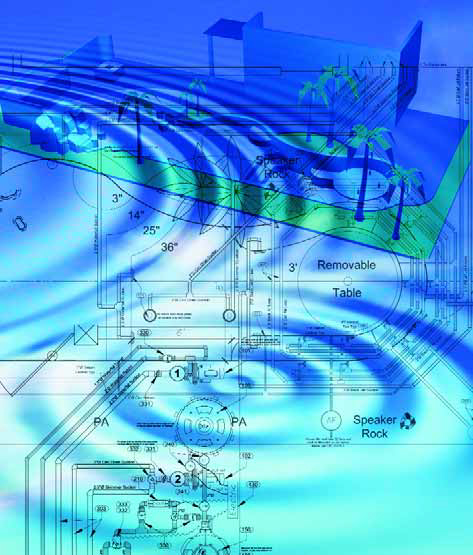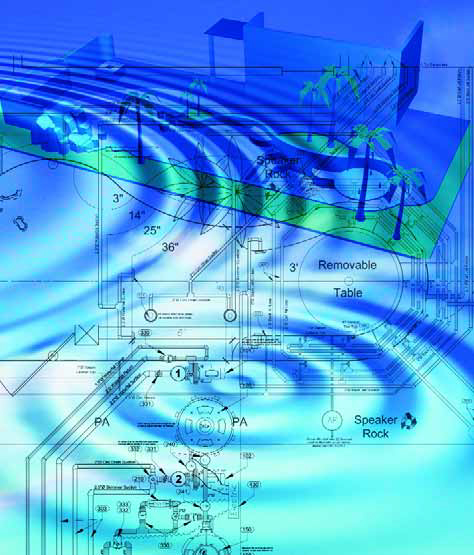students
It's true for any subject that it's basically impossible to teach and learn about a topic unless there's a shared set of terms that everyone understands and can agree about what they mean. I've thought about that fact a lot in developing a course for university students about watershaping, or what I'm most often calling "water architecture" these days. With watershaping as a subject, that sounds simple enough. After all, we all know the meaning of "swimming pool," "fountain" and "pond." Or do we? I'm not so sure anymore. When I started breaking down our vocabulary for classroom use, I quickly recognized that the meanings of the words we use are anything but clear. Indeed, the more I dug into this seemingly simple phase of curriculum development, the murkier things became.The difficulty I ran into was this: Once I moved past the most rudimentary sets of terms and definitions and looked closely at the language we use to describe what we produce, it became painfully obvious to me that
It's true for any subject that it's basically impossible to teach and learn about a topic unless there's a shared set of terms that everyone understands and can agree about what they mean. I've thought about that fact a lot in developing a course for university students about watershaping, or what I'm most often calling "water architecture" these days. With watershaping as a subject, that sounds simple enough. After all, we all know the meaning of "swimming pool," "fountain" and "pond." Or do we? I'm not so sure anymore. When I started breaking down our vocabulary for classroom use, I quickly recognized that the meanings of the words we use are anything but clear. Indeed, the more I dug into this seemingly simple phase of curriculum development, the murkier things became.The difficulty I ran into was this: Once I moved past the most rudimentary sets of terms and definitions and looked closely at the language we use to describe what we produce, it became painfully obvious to me that
Why isn't the appropriate use of water a defining, central component in the education of landscape architects? That question has rattled around in my head for a long, long time, basically because it has no adequate or satisfactory answer. I'm a trained landscape architect and, as luck would have it, for nearly 20 years I've had one foot in the pool industry and the other in landscape architecture - and I've always felt like a rare beast moving back and forth between two entirely separate worlds. As I see it, this lack of affinity between these water-related industries has been a limiting factor in the advancement of the watershaping trades. For me, the lack of connection has always seemed nonsensical when it hasn't seemed tragic. As a watershaper, a big part of my work in recent years has been seeking ways to combine the best of both worlds and share what I know with university-level students in landscape architecture departments - students whose chairs I occupied some years ago and who still stand a good chance of graduating without ever having been taught anything at all about how water can
Why isn't the appropriate use of water a defining, central component in the education of landscape architects? That question has rattled around in my head for a long, long time, basically because it has no adequate or satisfactory answer. I'm a trained landscape architect and, as luck would have it, for nearly 20 years I've had one foot in the pool industry and the other in landscape architecture - and I've always felt like a rare beast moving back and forth between two entirely separate worlds. As I see it, this lack of affinity between these water-related industries has been a limiting factor in the advancement of the watershaping trades. For me, the lack of connection has always seemed nonsensical when it hasn't seemed tragic. As a watershaper, a big part of my work in recent years has been seeking ways to combine the best of both worlds and share what I know with university-level students in landscape architecture departments - students whose chairs I occupied some years ago and who still stand a good chance of graduating without ever having been taught anything at all about how water can














